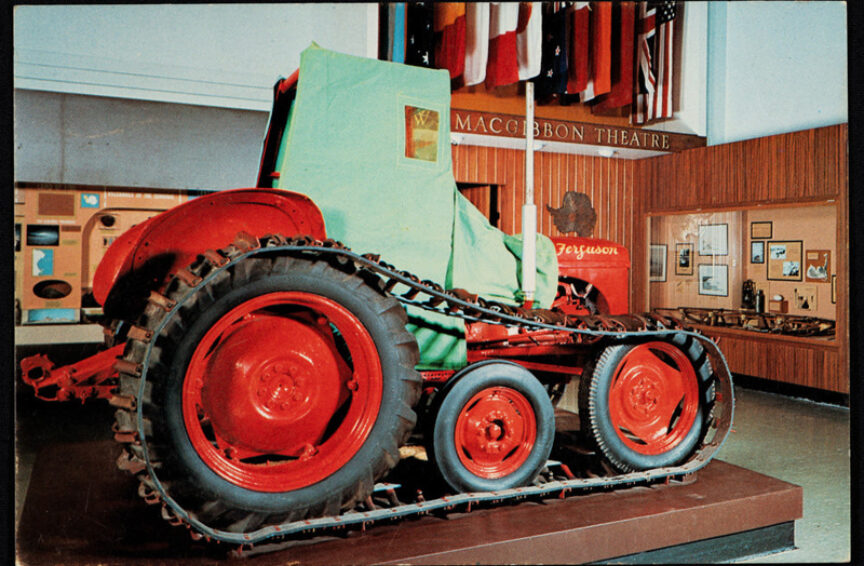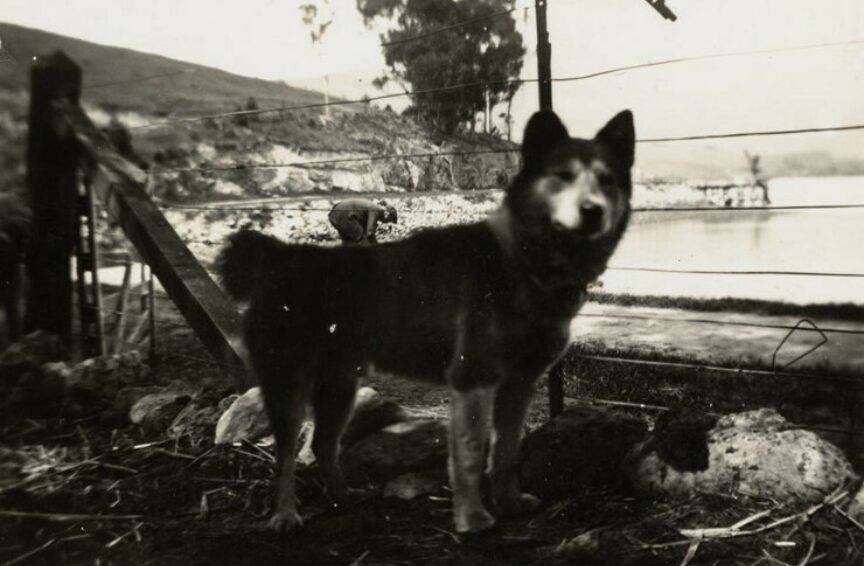PO Box 95
Lyttelton 8841
Te Ūaka recognises Te Hapū o Ngāti Wheke as Mana Whenua and Mana Moana for Te Whakaraupō / Lyttelton Harbour.
A Most Remarkable Penguin
Safe in storage at the Airforce Museum of New Zealand along with the rest of Te Ūaka The Lyttelton Museum’s collection, this taxidermied emperor penguin in a glass display case was rescued from the old Museum building prior to its demolition in 2011.
The emperor penguin (Aptenodytes forsteri) is the world’s largest penguin species - both sexes reach a height of 1.1-1.3 m and a weight of 22-45 kg at maturity. The remarkable emperor is endemic to Antarctica and can lay claim to many other unique qualities and behaviours. The only bird species that breed during the Antarctic winter, they are uniquely adapted to the extremely harsh environment where air temperatures can reach −50 °C, with wind speeds of up to 200 km/h.
The emperor's distinctive ‘tuxedo’ of dark and white plumage is made up of dense insulating feathers which also provides excellent camouflage whilst at sea. A layer of subdermal fat up to 3 cm thick ensures survival for months of fasting during the breeding season. Feeding primarily on Antarctic silverfish and also squid and krill, emperors are adept divers, able to stay underwater for up to 20 minutes to depths of 500 m. Along with their streamlined bodies, they have several adaptations which allow this – their bones are solid to reduce the risks of barotrauma and they have specially structured haemoglobin for low oxygen levels. Able to slow their heart rate to 15-20 beats per minute they can effectively reduce metabolism and organ function.
Emperors are sociable birds who congregate in 46 known colonies of up to several thousand individuals each around the Antarctic continent. Most of these are located on ‘fast’ ice (attached to the land), protected somewhat by sea cliffs or icebergs and with openings to the sea via polynyas – permanent openings in the sea ice created by the action of wind and currents. These allow essential access to feeding grounds during the arduous work of incubating and rearing future generations.
Breeding commences with courtship rituals in March-April; females lay a single, thick shelled egg in July-August, before returning to sea to feed, having exhausted their reserves. Adult birds protect their eggs and later the hatched chicks from the freezing ground by holding them on top of their broad feet against a brood patch of featherless skin which wraps the precious cargo. The transfer of egg from female to male is a difficult operation and many eggs are lost due to cracking or freezing on the ground. If the crucial transfer is successful, the male will protect the egg for around 65 days until it hatches. Huddling with other males in a tight circle, backs to the ferocious wind, the group shuffle in a spiralling movement sometimes referred to as a turtle formation; allowing all an opportunity at the warmest inner positions.
Once hatched, chicks are fed on the males' crop milk for 4-7 days until the females return from the sea – by this stage the males weigh around 23 kg, having lost nearly half their body weight. The journey to and from feeding grounds can cover distances of 50-120 km. Until the chicks fledge in December, the pair will take turns at sea and in the colony, calling with complex vocalisations for their mate and fluffy silvery-grey chick. If a chick is orphaned it has no chance of survival; in addition, due to predation by Southern giant petrels (Macronectes giganteus) and the opportunism of the south polar skua (Stercorarius maccormicki), less than 20% of chicks survive their first year of life.
If an emperor gains maturity and survives attack by leopard seal (Hydrurga leptonyx) or orca (Orcinus orca), a typical lifespan is 20 years. In 2009, the total population was estimated at around 595,000 adult birds. The bird is currently under consideration for inclusion under the US Endangered Species Act, as it is at risk due to the effects of climate change on food sources, habitat destruction and, increasingly, the impact of Antarctic tourism.
Apsley Cherry-Garrard, who made a near fatal journey from Cape Evans to Cape Crozier in the depths of winter 1911 with Edward Wilson and Henry Bowers, to collect emperor penguin eggs for scientific purposes, wrote in 1922 -
"Take it all in all, I do not believe anybody on Earth has a worse time than an emperor penguin".
Apsley Cherry-Garrard (1922) The Worst Journey in the World

